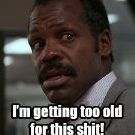-
Recently Browsing 0 members
- No registered users viewing this page.
ABOUT US
Call of Duty Zombies (CODZ) is a fan-managed gaming community centered around the popular Call of Duty franchise with central focus on the Zombies mode. Created in 2009, CoDZ is the ultimate platform for discussing Zombies theories, strategies, and connecting players.
Activision, Call of Duty, Call of Duty: Black Ops titles, Call of Duty: Infinite Warfare titles, Call of Duty: WWII are trademarks of Activision Publishing, Inc.
We are not affiliated with Activision nor its developers Treyarch, Sledgehammer, or Infinity Ward.
PARTNERS & AFFILIATES
Interested in becoming an affiliate/partner or looking for business opportunities? Shoot us an email at [email protected] to join the CODZ family. While you're here, show our partners some love!
SITE LINKS
Our most popular pages made convenient for easier navigating. More pages can be found in the navigation menu at the top of the site.


Recommended Posts
Create an account or sign in to comment
You need to be a member in order to leave a comment
Create an account
Sign up for a new account in our community. It's easy!
Register a new accountSign in
Already have an account? Sign in here.
Sign In Now